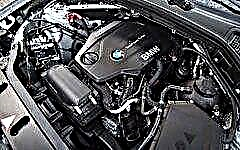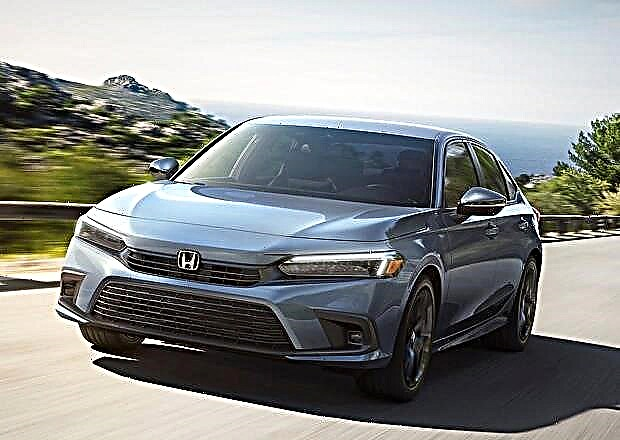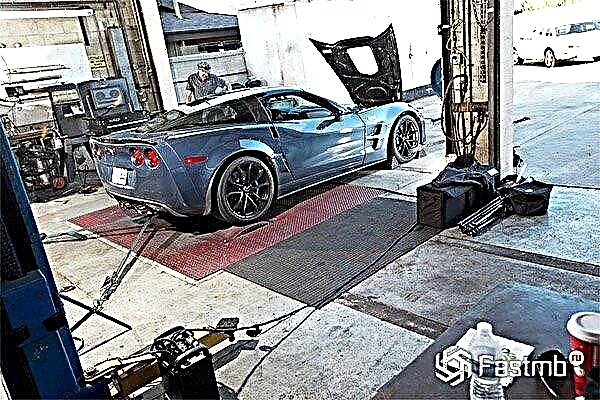The article contains a description of the break-in period of a new car: the length of the period, the concept of "cold" and "hot" break-in, a list of loads that should be excluded or minimized, the recommended speed in each gear in different break-in periods, components that do not require "lapping", the need for zero maintenance.

The photo shows a cold run-in of the car
Immediately after buying a car, many of us are impatient to check what our new car is capable of - to accelerate to maximum speed, to compete with friends. But all these little joys of the motorist should be postponed until a later date - the first thousand and two runs of a new car should be overcome in a sparing mode.
- What is "cold" vehicle break-in? - This is a running-in of the transport at a special stand to identify the primary malfunctions of the machine.
- What is hot run-in of a car? - This is already direct driving around the city without forcing the engine up to 2000 km, after which you can fully load the engine.
New car break-in has remained and remains necessary for almost all new cars. Quite often, manufacturers declare about carrying out the so-called "cold" run-in at stands, but it is more likely to be used for the initial running-in of friction pairs and for the determination of defects. The need for running in road conditions remains for such cars as well - the parts interacting with each other need to get used to, "learn" to work together. Even if the manufacturer believes that at the first stages of operation, the use of a car in suboptimal conditions will not cause him obvious harm, it is still worth saving the "iron horse". How you drive the first couple of hundred kilometers determines the lifespan of individual machine components and oil consumption.
Whatever power your car would not have, forget about it for a thousand or two kilometers. Your ride during this period should be soft, accurate, without heavy loads on the engine and other components. The first half thousand kilometers are especially important - it is advisable to drive them in one day along a half-empty track without traffic jams and sudden braking. It is recommended not to drive at the same speed for a long time - this contributes to additional loads on the crankshaft. Long-term operation of the engine at the same speed contributes to the grinding of parts in one position; when you have covered the required mileage and return to a more familiar driving style, they will have to adapt to each other again, but in less favorable conditions. If we talk about the maximum speed in each gear, then when driving in first it should not exceed 20 km / h, the second - 40 km / h, the third - 60 km / h, the fourth - 80-85 km / h. Fifth gear can be used after driving the first 500 km, while not exceeding the 120 km / h mark. Riding uphill in fifth gear during the break-in period is prohibited.
After driving the first 500 km, you can slightly increase the engine speed - 5 km / h is added to the maximum speed in each gear during this period. After driving another 500 km, we increase the engine speed again and add 5-10 km / h to the maximum speed in a certain gear - now you can drive a maximum of 30 km / h in the first, 55 km / h in the second, and 75 km / h in the third. , the fourth - 110 km / h, the fifth - 130-135 km / h. After overcoming this distance, you can subject the engine to more serious loads: take gentle climbs in fifth gear, increase engine speed, accelerate to higher speeds - this will help determine if any problems arise with different driving styles.
It is recommended to drive so that the tachometer needle is in the middle operating range - it is difficult to name more specific indicators due to the difference in the characteristics of the motors. The ideal option is a more or less uniform movement, which will not create a large load on the engine.
Car break-in does not imply standing in traffic jams at first. "Ragged" movement, frequent braking, the inability to reach the operating temperature range heavily load the engine that has not yet been rolled. It is not recommended to overload the new car with luggage (even if the weight does not exceed the one specified by the manufacturer) or to drive with a trailer. Off-road driving is also undesirable - if you get stuck, overloading the drivetrain and engine is inevitable. By the way, speaking of the transmission - even though no special lapping is required here, it must be handled as carefully as with the engine: smoothly release the clutch pedal, carefully handle the gear lever.
Components such as the brake system practically do not require running-in (the pads are rubbed in on the first kilometers and then only wear out), the chassis, and the steering.
After driving the first 2000-3000 km, we recommend to go through zero maintenance, which is a car diagnostics. It will take a little time, but it will allow you to timely identify defects that can potentially cause serious malfunctions and damage your car. After the first two thousand, you can relax and use the car at full capacity.











